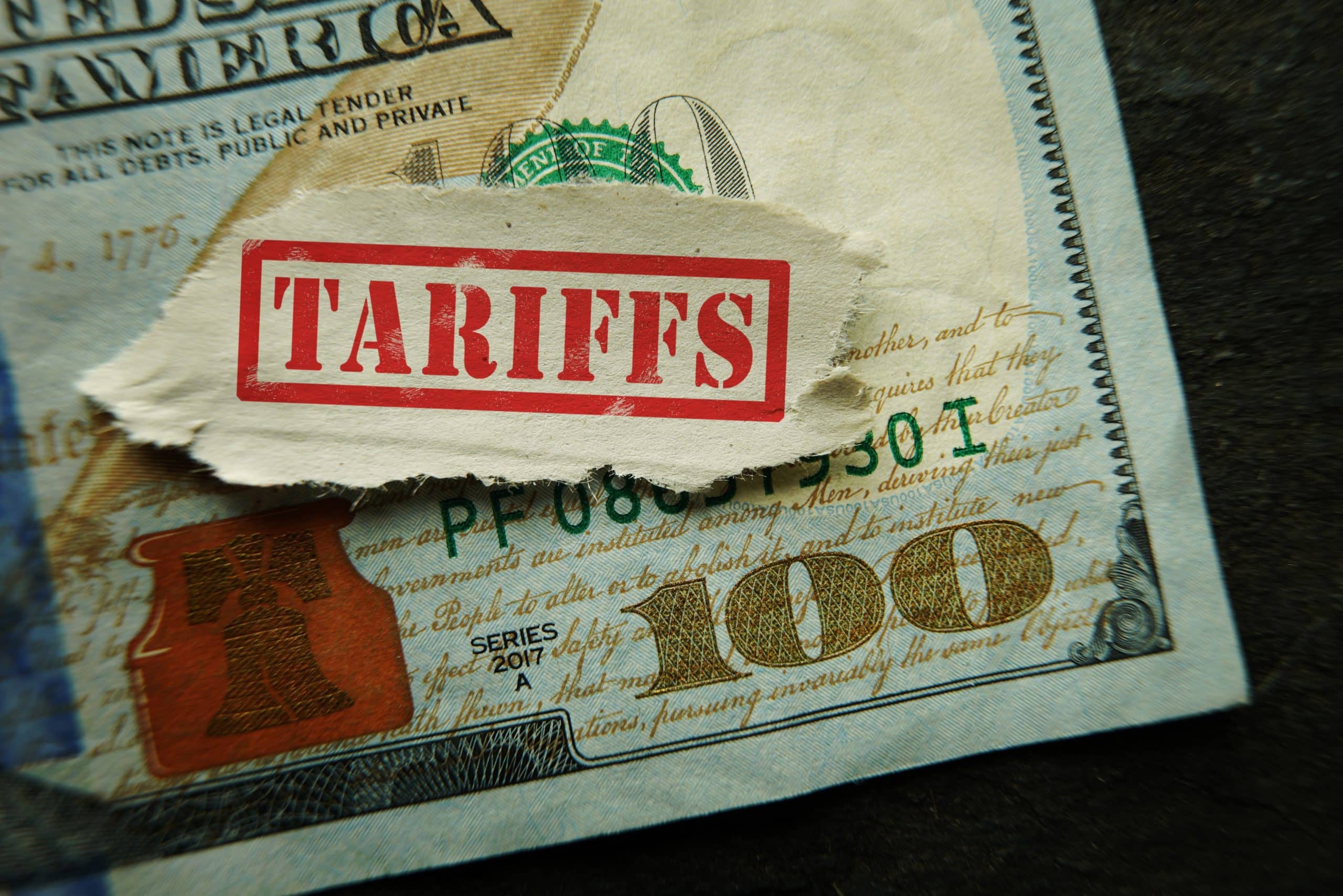In July 2025, U.S. tariff revenue soared to an unprecedented $29.6 billion in a single month—a record that reignites a long-standing debate: can tariffs become a viable tool to reduce the country’s persistent trade deficit? For decades, the U.S. has grappled with chronic imbalances in its trade flows. Now, a new fiscal trend raises a fundamental question: is the United States on the verge of reversing this pattern, or is this just a short-term spike driven by temporary policy shifts?
A Massive Revenue Jump Fueled by Strategic Tariff Measures
The surge in tariff collections didn’t happen by chance. Since March 2025, when a new round of import duties was introduced, tariff revenue has been climbing at an extraordinary pace. From just $8.2 billion in March, collections rose to $22.2 billion in May, jumped to $26.6 billion in June, and culminated in July’s record $29.6 billion. Altogether, the past three months have brought in $78 billion—surpassing the entire Fiscal Year 2024 tariff revenue in just one quarter.
At this current trajectory, the U.S. could collect approximately $308 billion in tariff revenue by the end of 2025—a staggering increase from the $77 billion collected in 2024. Such a fiscal shift would position tariffs as a nearly equivalent source of revenue to corporate income taxes, which totaled around $366 billion last year.
Trade Deficit Narrows: A Promising Shift or Statistical Fluke?
The recent improvement in the U.S. trade balance adds further intrigue. According to the Bureau of Economic Analysis, the trade deficit narrowed to $60.2 billion in June, down sharply from $71.7 billion in May and better than the $62.6 billion expected by economists. This $11.5 billion reduction is one of the largest month-over-month improvements in recent years.
Proponents argue that the implementation of new tariffs is already influencing import behavior. Higher duties may have discouraged foreign purchases or incentivized domestic alternatives. However, analysts caution against drawing firm conclusions from a single data point. Seasonality, supply chain disruptions, and pre-tariff stockpiling may have also skewed the numbers, making it difficult to assess whether this marks the beginning of a structural rebalancing or just a temporary distortion.
The Bullish Case: A Viable Fiscal Strategy to Restore Trade Balance
Supporters of the current trade policy see these figures as early proof that tariffs can be more than just a protectionist tool—they can serve as a legitimate fiscal lever. The argument is that by both raising government revenue and dampening reliance on imports, tariffs contribute to national economic resilience. If the current revenue trend continues, the government could generate more from tariffs in 2025 than it has in any single year in modern history.
Furthermore, some observers suggest that the revenue windfall could reduce the need for future tax hikes or spending cuts, offering policymakers more room to maneuver. Tariff-backed fiscal stability, they argue, could be the first step toward a longer-term strategy of industrial repatriation and trade realignment.
The Bearish View: Higher Costs, Retaliation Risks, and Consumer Fallout
Critics, however, raise serious concerns about the broader economic impact. Tariffs, while lucrative for the federal budget, effectively act as a hidden tax on consumers. As importers pass along the cost of duties, everyday Americans may face rising prices—particularly on goods that have no immediate domestic substitute. In an environment where interest rates remain high and inflation is still a concern, even modest price increases could dampen household consumption and weaken economic momentum.
Additionally, there’s the risk of international blowback. Countries like China, the EU, and key Asian trading partners may respond with retaliatory tariffs, curbing U.S. exports and reigniting trade tensions that had only recently begun to stabilize. If tit-for-tat measures escalate, global supply chains could face renewed disruption, undercutting the very economic growth that tariff revenues aim to bolster.
A Pivotal Crossroads: Structural Shift or Temporary Gain?
The coming months will serve as a critical test for the U.S. trade and fiscal strategy. Sustained improvement in the trade balance, coupled with consistently high tariff revenues, could mark the beginning of a long-awaited shift in America’s external accounts. But if the apparent gains are rooted in import suppression rather than export strength—or if consumer backlash grows—pressure will mount to reevaluate the approach.
Ultimately, the data presents a compelling, yet inconclusive, case. The U.S. may finally be gaining traction in addressing its trade imbalance. But without a broader industrial and export strategy to match, tariffs alone may prove insufficient. Whether this is a turning point or a temporary reprieve remains to be seen.
Comparison, examination, and analysis between investment houses
Leave your details, and an expert from our team will get back to you as soon as possible
* This article, in whole or in part, does not contain any promise of investment returns, nor does it constitute professional advice to make investments in any particular field.
To read more about the full disclaimer, click here- Lior mor
- •
- 6 Min Read
- •
- ago 59 minutes
 Investing Early: A Strategic Necessity
Investing Early: A Strategic Necessity
Investing Early Is Not a Choice—It's a Financial Imperative How $200 a Month Can Turn Into Over Half a Million
- ago 59 minutes
- •
- 6 Min Read
Investing Early Is Not a Choice—It's a Financial Imperative How $200 a Month Can Turn Into Over Half a Million
- sagi habasov
- •
- 6 Min Read
- •
- ago 3 hours
 Sector Performance Breakdown in the S&P 500: Winners and Losers YTD 2025
Sector Performance Breakdown in the S&P 500: Winners and Losers YTD 2025
While the broader S&P 500 has seen moderate gains in the first half of 2025, a sector-level breakdown reveals a
- ago 3 hours
- •
- 6 Min Read
While the broader S&P 500 has seen moderate gains in the first half of 2025, a sector-level breakdown reveals a
- Ronny Mor
- •
- 8 Min Read
- •
- ago 4 hours
 Berkshire Hathaway Stock Drops Post-Buffett: End of Outperformance vs. S&P 500?z
Berkshire Hathaway Stock Drops Post-Buffett: End of Outperformance vs. S&P 500?z
Warren Buffett’s retirement announcement in early June 2025 marked more than just the end of an era — it triggered
- ago 4 hours
- •
- 8 Min Read
Warren Buffett’s retirement announcement in early June 2025 marked more than just the end of an era — it triggered
- orshu
- •
- 7 Min Read
- •
- ago 5 hours
 🌏 Asia Markets Open Higher on Wednesday Amid Global Tailwinds
🌏 Asia Markets Open Higher on Wednesday Amid Global Tailwinds
Asian stocks surged at the start of Wednesday’s trading session, August 6, 2025, buoyed by strong cues from Wall Street
- ago 5 hours
- •
- 7 Min Read
Asian stocks surged at the start of Wednesday’s trading session, August 6, 2025, buoyed by strong cues from Wall Street












